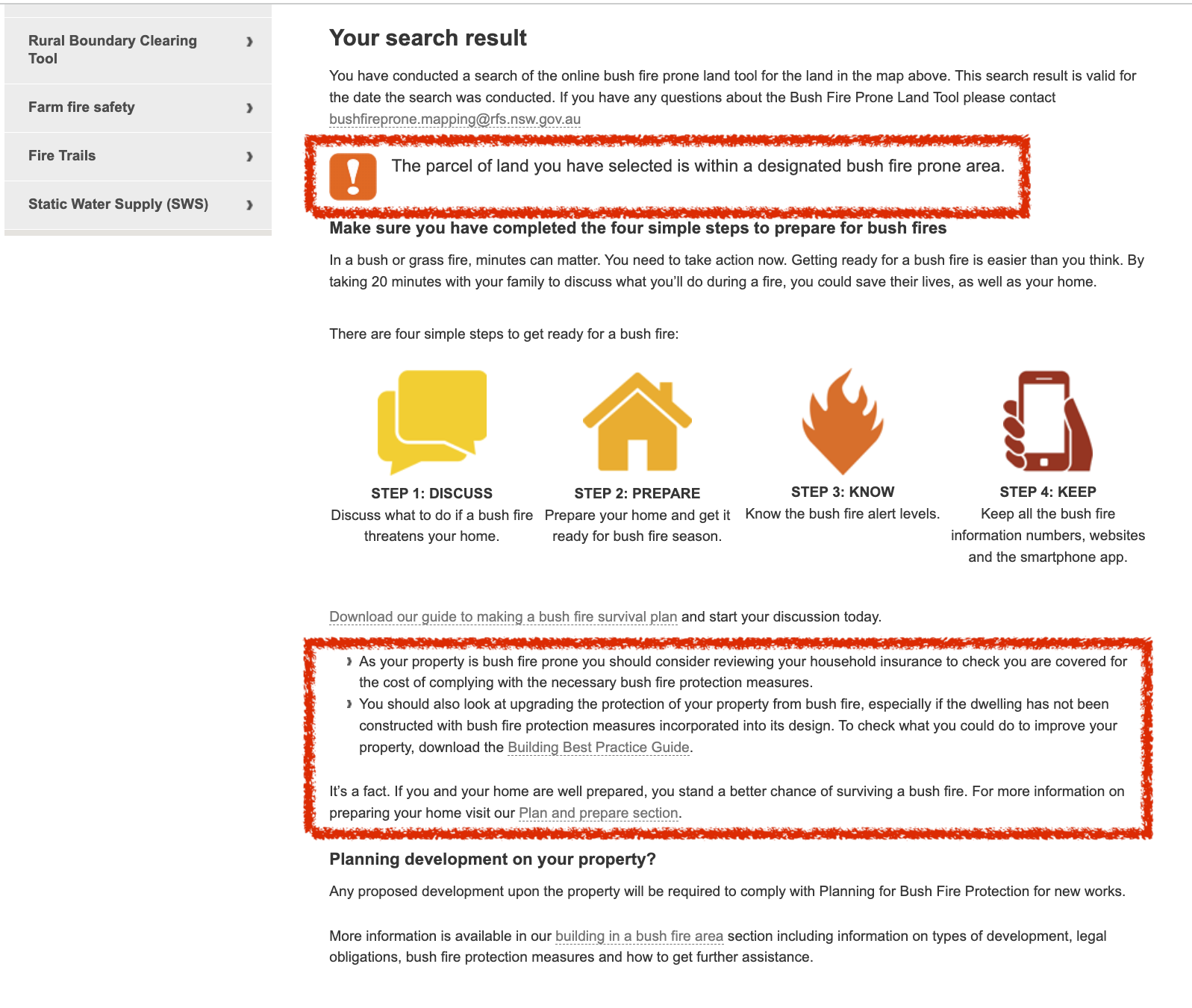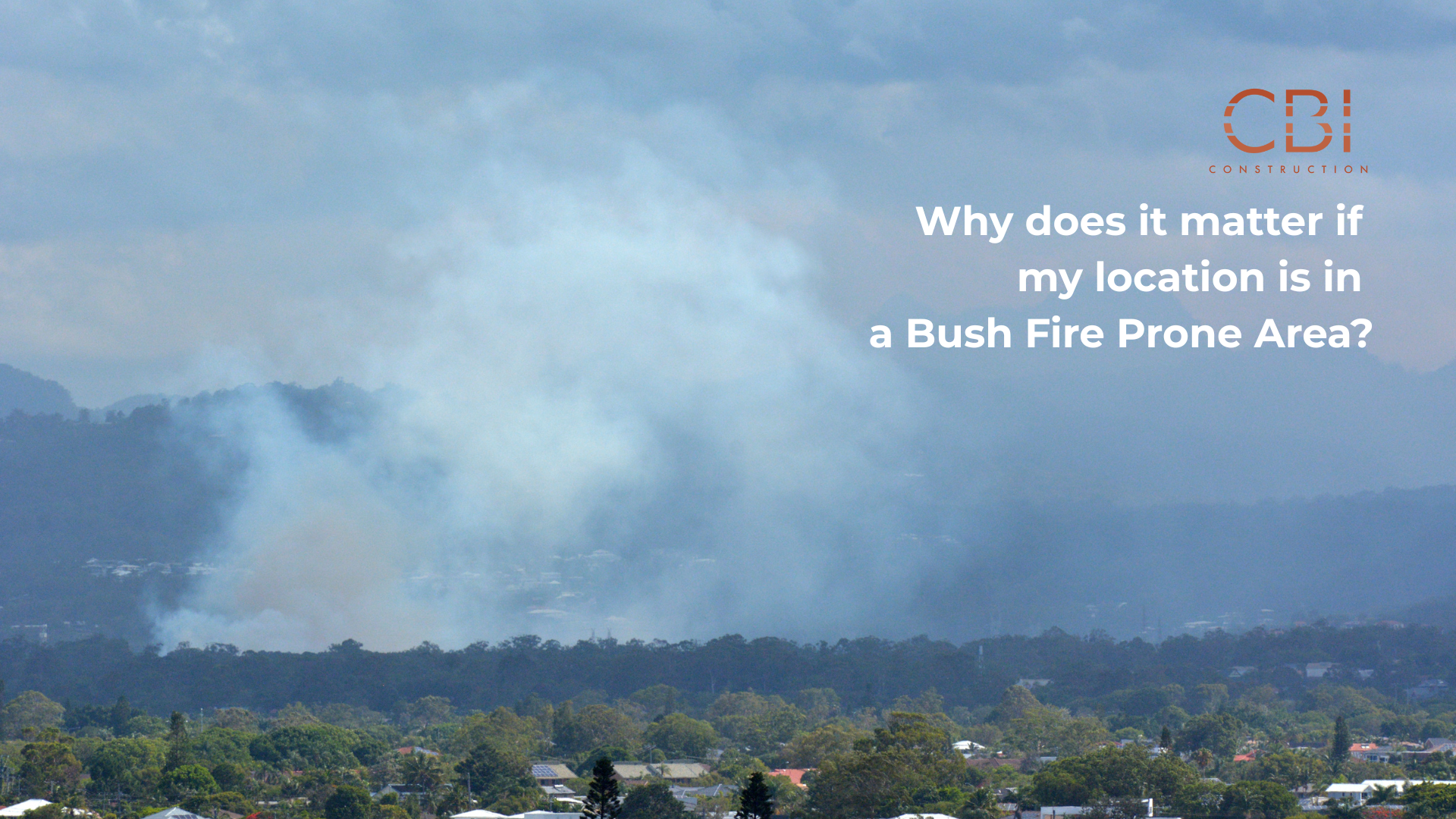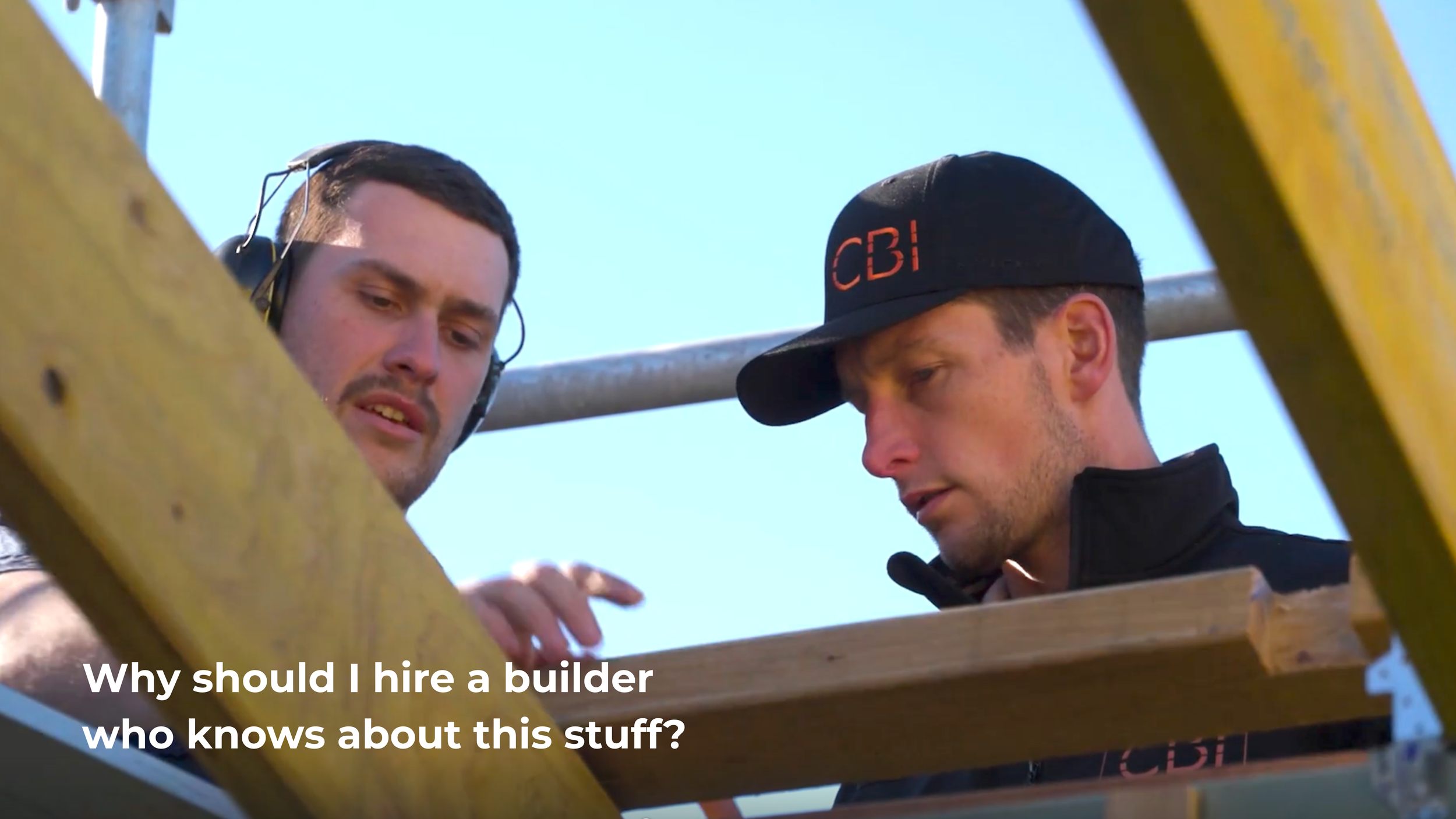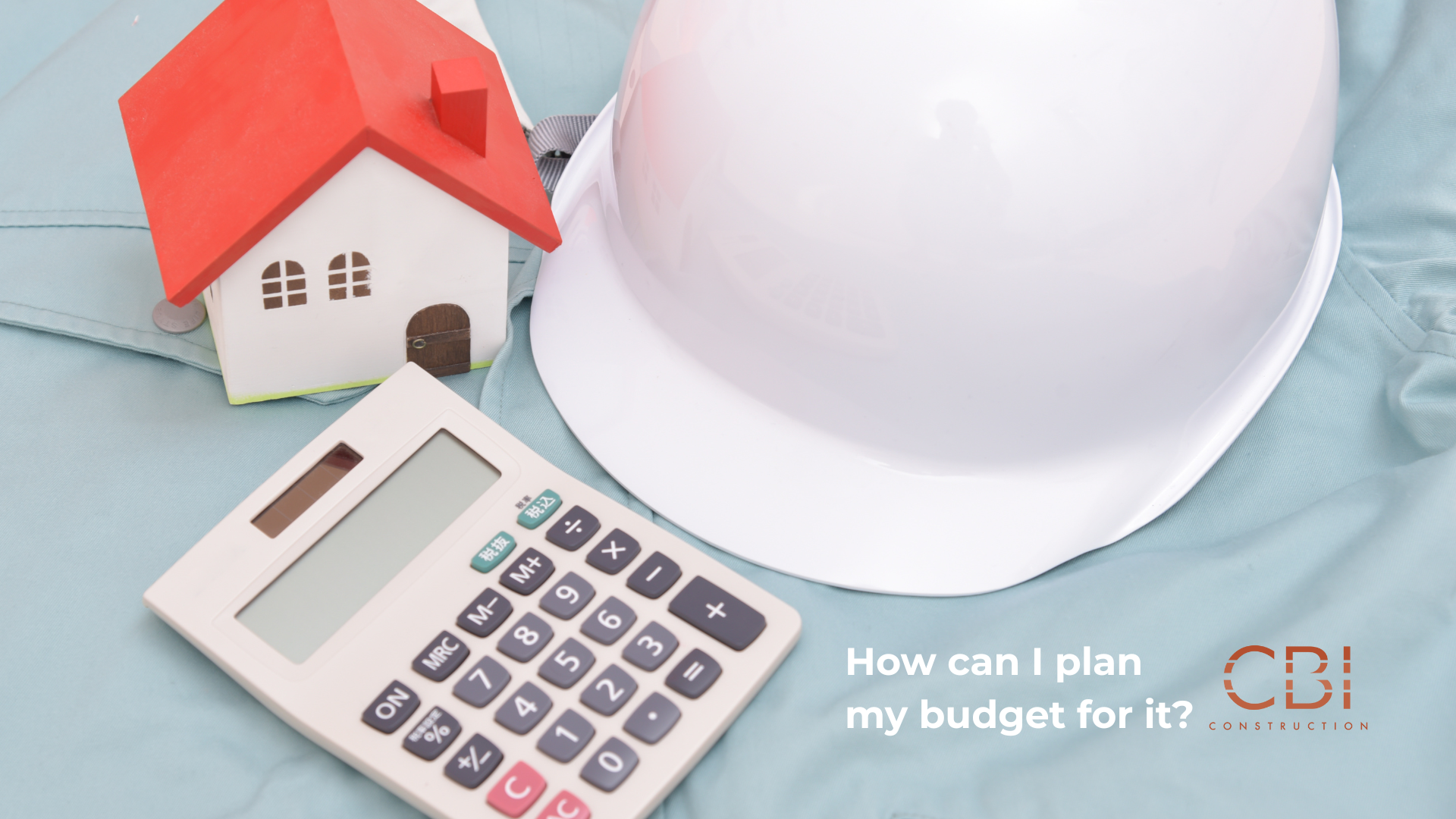Are you in a Bush Fire Prone Area?
Building or Renovating in a Bush Fire Prone Area: Everything You Need to Know
The NSW Rural Fire Service (NSW RFS) identifies bushfire-prone land, and the risk is generally higher during spring and early summer.
We understand that building or renovating a home in a bush fire prone area can feel overwhelming. There are specific regulations, safety requirements, and design considerations that need to be addressed to protect your property and your loved ones. To help, we’ve created a clear guide that answers all your key questions and ensures you're well-prepared for the process. Here are some general Guide Questions that you need to know and answer.
How do I know if my location is in a Bush Fire Prone Area?
To determine if your property is in a Bush Fire Prone Area, you can:
1. Check the Bush Fire Prone Land Map published by the NSW RFS (Rural Fire Service). These maps are available online and are updated periodically.
You just need to follow these simple instructions:
**Go to this link: Check if you're in bush fire prone land
**Type in your address, including your house number, street, and suburb or town. Then just pick your address from the drop-down list.
**Hit the 'Get Results' button to check if you're in a bush fire prone area.
2. Contact the Northern Beaches Council, which has access to zoning and bushfire risk maps specific to the area.
Check their website for more details: https://www.northernbeaches.nsw.gov.au/search?keyword=Bal+FZ
3. Look at your property’s Section 10.7 Planning Certificate, which will indicate if your land is classified as bush fire prone.
4. If your location is in a bush fire prone area, additional building requirements will apply.
Why does it matter if my location is in a Bush Fire Prone Area?
Based on the latest conditions and forecasts, NSW is looking at a 'normal' fire season for most of 2024. Learn more here: RFS Fire Season Outlook 2024 - 2025
Knowing whether your property is in a bush fire prone area is critical because:
Safety First: Homes in these areas are at higher risk of fire damage and require additional measures to ensure the safety of occupants.
Regulations Apply: Properties in bush fire prone areas must adhere to specific construction standards outlined in the National Construction Code (NCC) and Australian Standard AS3959 for building in bushfire-prone locations.
Insurance Requirements: Insurers often require confirmation that your property meets bushfire building standards before offering coverage.
What steps do I need to take to build or renovate a home there?
Take a look at the requirements you need from this reference: Part H7 Ancillary provisions and additional construction requirements
Building or renovating in a bush fire prone area involves several steps to comply with regulations and ensure safety:
1. Comply with AS3959 Standards:
Depending on your BAL rating, your construction must comply with Australian Standard AS3959, which provides specific building requirements for materials, design, and construction techniques.
2. Submit a Development Application (DA):
Lodge a DA with the Northern Beaches Council, including a bushfire assessment report and plans that demonstrate compliance with bushfire requirements.
3. Engage a Qualified Builder:
Work with a builder experienced in bushfire construction to ensure all materials, design elements, and construction methods meet the relevant standards.
4. Obtain Approval from the NSW RFS:
For certain high-risk areas, approval from the NSW RFS is required before construction can proceed.
Who should I bring on board for the job?
Make sure your builder has the right licenses! You can double-check they’re legit here: https://verify.licence.nsw.gov.au/home/.
To build or renovate in a bush fire prone area, you’ll need the following professionals:
1. Bushfire Consultant: To assess your BAL and provide recommendations for compliance.
2. Architect or Designer: Experienced in designing homes for bushfire-prone areas.
3. Licensed Builder: Choose a builder (like us!) with expertise in bushfire-compliant construction and a deep understanding of local regulations.
4. Certifier: To confirm your build meets all required standards before and after construction.
Why should I hire a builder who knows about this stuff?
Creating your dream home starts with finding the right builder. Read our blog “Selecting the Ideal Builder”.
A builder with experience in bushfire-prone construction brings invaluable knowledge to your project:
1. Compliance Expertise: Ensures your home meets the latest NCC and AS3959 standards, as well as the Northern Beaches Council and NSW RFS requirements.
2. Material Knowledge: Uses fire-resistant materials like steel, ember-sealed windows, and non-combustible cladding.
3. Practical Solutions: Incorporates design features that reduce risk, such as ember screens, fire-resistant landscaping, and strategic house placement.
4. Time and Cost Efficiency: Avoid costly mistakes or delays that can arise from non-compliance.
How can I plan my budget for it?
Learn more about the different contracts here “Choosing the Right Contract: Fixed Plus vs. Cost Plus”
Building in a bush fire prone area can cost more than a standard build due to the additional measures required. Here's how to prepare your budget:
1. Factor in Compliance Costs: Include costs for BAL assessments, RFS approvals, and bushfire-specific materials like ember-resistant roofing and glazing.
2. Plan for Sustainable Landscaping: Allocate funds for fire-resistant landscaping and water storage systems for firefighting.
3. Engage Experienced Professionals: While it may cost more upfront, hiring experts can save you money in the long term by avoiding non-compliance penalties or reconstruction after a bushfire.
Final Thoughts
Building or renovating in a bush fire prone area requires careful planning, but with the right team and preparation, you can create a safe, beautiful, and compliant home. We’re here to help guide you through every step of the process, from BAL assessments to final approvals. If you have any questions or need expert advice, reach out to us today. Let’s build something safe and spectacular together!
If you’re ready to start your transformation, we’d love to help! Reach out to our expert team for guidance, design advice, and personalized solutions tailored to your space.
Contact us today:
Email: sales@cbi.construction
Mobile: 0485 908 863
Book a Meeting: https://www.cbiconstruction.com.au/book-a-meeting
Together, we’ll make your outdoor space a Mediterranean-inspired retreat you’ll adore for years to come. 🌿
To learn more about BAL-FZ Class 1 Go to this blog:
Photo Credits to: Tools
Learn everything you need to know about BAL-FZ (Bushfire Attack Level - Flame Zone) requirements for building a bushfire-safe home. Discover how fire-resistant materials for windows, cladding, and roofing protect your property and meet Australian Standard AS3959. Stay prepared and ensure your home withstands bushfire risks in high-risk areas like the Northern Beaches.











